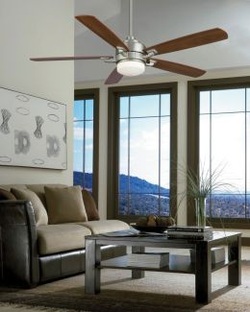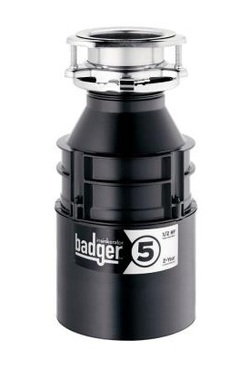
Ceiling fans are definitely a necessity these days and although they can't change the ambient temperature, the flowing air can have a cooling effect by speeding up the rate by which your perspiration evaporates from your skin, hence the cooling feeling when your directly in the path of the fan.
Depending on the size of your ceiling fan, energy consumption can be between 15 to 30 watts on low speed, 30 to 50 on medium and 50 to 100 watts on high. A typical Florida home has 4.3 ceiling fans and consumes about 800 kwh per year to power these puppies. A central AC uses 2000 to 5000 watts for the same size home.
Choosing the right ceiling fan depend on the size of the room. Blade spans vary from 24" to 80". For room under 75 sq.ft. you want a ceiling fan that's 36 inches or smaller. 75 sq.ft. to 144 sq.ft. consider fans 36" to 42". 144 sq.ft to 225 sq.ft you might look into fans spanning 44" to 50". 225 sq.ft to 400 sq.ft you're looking at a ceiling fan 50" to 54". Large rooms with high ceilings there are lengths from 60" to 80". Large fans are as much about size and function in meeting the requirements of a large area. Since ceiling fans don't actually decrease room temperature, as stated earlier, install them where you spend the most time. Good spots are in a family room, bedroom or kitchen dining area.
Control options vary as well. You can go old school by using the ominous pull chains as most of us remember. Wall switches that control lighting and fan separately (make sure your wiring allows this). Newer versions of ceiling fans come with wireless remote controls. FYI, there are retro fitted remote controls you can add to older ceiling fans. Space considerations have to be accounted for since the control unit has to be placed inside the fan housing. All in all ceiling fans can make summer bearable when you don't have central AC. And that's OK with me since southern California heat is not that bad to begin with.
Depending on the size of your ceiling fan, energy consumption can be between 15 to 30 watts on low speed, 30 to 50 on medium and 50 to 100 watts on high. A typical Florida home has 4.3 ceiling fans and consumes about 800 kwh per year to power these puppies. A central AC uses 2000 to 5000 watts for the same size home.
Choosing the right ceiling fan depend on the size of the room. Blade spans vary from 24" to 80". For room under 75 sq.ft. you want a ceiling fan that's 36 inches or smaller. 75 sq.ft. to 144 sq.ft. consider fans 36" to 42". 144 sq.ft to 225 sq.ft you might look into fans spanning 44" to 50". 225 sq.ft to 400 sq.ft you're looking at a ceiling fan 50" to 54". Large rooms with high ceilings there are lengths from 60" to 80". Large fans are as much about size and function in meeting the requirements of a large area. Since ceiling fans don't actually decrease room temperature, as stated earlier, install them where you spend the most time. Good spots are in a family room, bedroom or kitchen dining area.
Control options vary as well. You can go old school by using the ominous pull chains as most of us remember. Wall switches that control lighting and fan separately (make sure your wiring allows this). Newer versions of ceiling fans come with wireless remote controls. FYI, there are retro fitted remote controls you can add to older ceiling fans. Space considerations have to be accounted for since the control unit has to be placed inside the fan housing. All in all ceiling fans can make summer bearable when you don't have central AC. And that's OK with me since southern California heat is not that bad to begin with.


 RSS Feed
RSS Feed